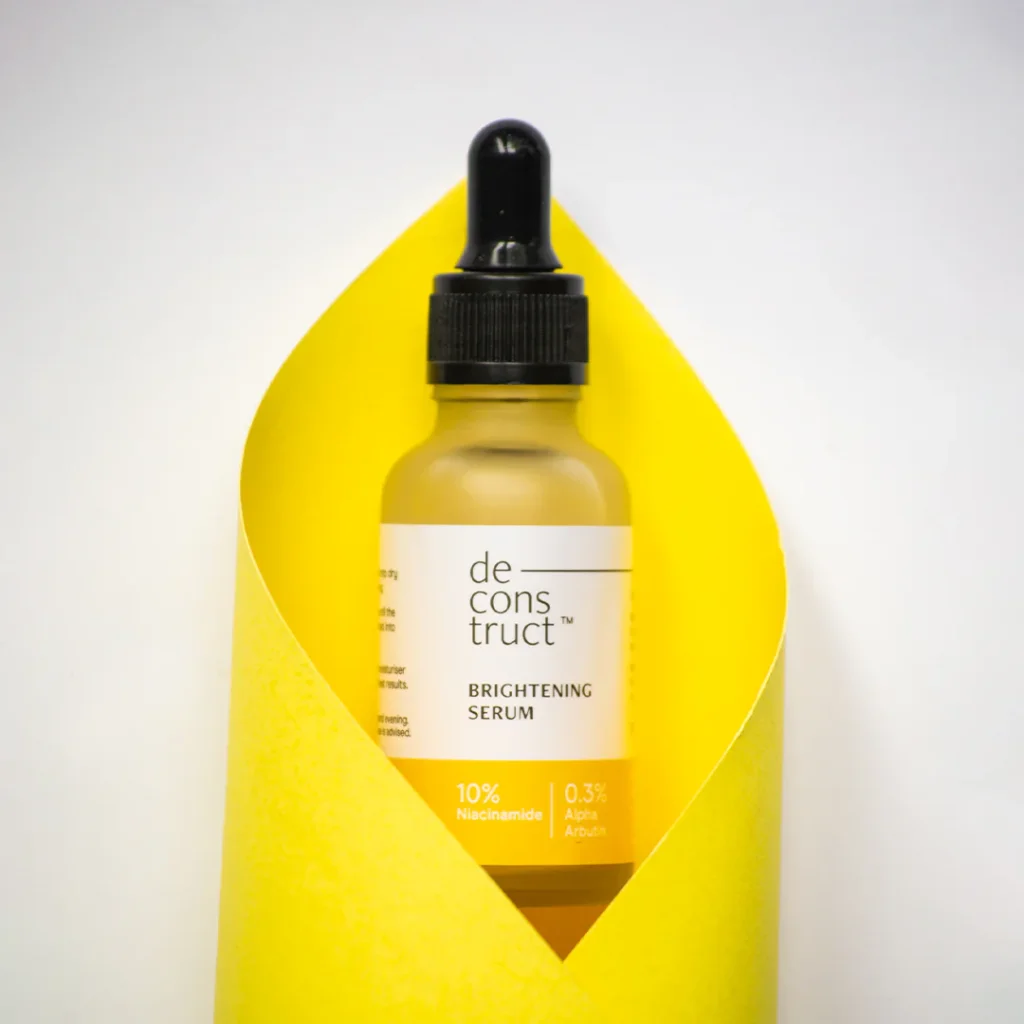Niacinamide, a form of vitamin B3, has become a staple in skincare.
It’s known for improving skin clarity, controlling excess oil, and fading dark spots without irritating the skin.
Whether you struggle with breakouts, post-acne marks, or oily T-zones, niacinamide offers a multi-benefit solution.
Its versatility makes it suitable for most skin types, especially oily and acne-prone skin.
With regular use, niacinamide serum strengthens the skin barrier, reduces inflammation, and visibly enhances skin texture.
This guide covers how niacinamide works, its benefits, correct usage, and who should use it.
Let’s break down the science behind the glow.
What is Niacinamide and How Does It Work?
Niacinamide is a water-soluble form of vitamin B3.
Unlike other actives, it doesn’t exfoliate or peel the skin. Instead, it works by calming inflammation and strengthening the skin barrier.
When applied topically, it penetrates into the skin to:
- Regulate sebum production
- Reduce redness and blotchiness
- Improve skin texture and elasticity
- Minimize pore appearance
- Support ceramide production
It also enhances the function of other ingredients, making your skincare more effective overall.
Niacinamide is gentle, non-sensitizing, and safe to use daily, even with active breakouts.
Its ability to multitask across concerns like acne, hyperpigmentation, and excess oil makes it a top choice for targeted skin care.
Key Benefits of Niacinamide Serum for Skin
Acne Reduction
Niacinamide reduces acne by decreasing inflammation and controlling oil, two major acne triggers.
It also inhibits the growth of acne-causing bacteria Cutibacterium acnes.
Unlike harsher actives, it soothes skin instead of irritating it, making it suitable even for sensitive or reactive skin types.
Regular use reduces the frequency and intensity of breakouts while calming active acne.
It also helps prevent future pimples by strengthening the skin barrier and balancing oil production.
Look for serums with 5–10% niacinamide for best results.
Fading Dark Spots & Hyperpigmentation
Niacinamide blocks the transfer of melanin to skin cells, which helps fade dark spots and acne scars.
It targets post-inflammatory hyperpigmentation (PIH), especially common in acne-prone skin.
With daily use, spots appear lighter, and skin tone becomes more even over time.
It’s gentler than ingredients like hydroquinone or AHAs, making it safe for long-term use.
Pairing it with ingredients like alpha arbutin or licorice root enhances its brightening effects.
Oil Control and Sebum Regulation
Niacinamide helps regulate sebum production without over-drying the skin.
By balancing oil levels, it reduces shine and minimizes clogged pores.
This makes it ideal for oily or combination skin types.
Unlike alcohol-based mattifying products, it keeps the skin hydrated while controlling oil.
A consistent niacinamide routine results in smaller-looking pores and fewer blackheads or whiteheads.
How to Use Niacinamide Serum Effectively
Use niacinamide serum after cleansing and before moisturizing.
Apply 2–3 drops on damp skin and gently pat it in.
It can be used twice daily—morning and night.
To maximize results:
- Use a cleanser that doesn’t strip skin
- Layer with hyaluronic acid if skin feels dry
- Follow with sunscreen in the morning
Avoid using it at the same time as strong acids (like AHAs or BHAs) if irritation occurs.
Introduce it slowly—start with once a day if new to actives.
Consistency is key. Noticeable results appear within 4–6 weeks of regular use.
Best Concentrations of Niacinamide for Different Skin Concerns
- 2–5% Niacinamide: Great for beginners, sensitive skin, or mild concerns
- 5–10% Niacinamide: Ideal for acne, oiliness, and post-acne marks
- Above 10%: May suit resistant skin but can increase the chance of irritation
Most dermatologists recommend staying within the 5–10% range for daily use.
Higher strengths don’t always mean better results and may disrupt the skin barrier.
Check for other soothing ingredients like zinc, hyaluronic acid, or panthenol in the formula for added benefits.
Potential Side Effects and Precautions
Niacinamide is generally well-tolerated, even by sensitive skin types.
However, high concentrations or incorrect layering can cause temporary redness, tingling, or irritation.
Precautions:
- Do a patch test before full use
- Start with a low percentage
- Avoid layering with low pH acids simultaneously
If irritation occurs, reduce usage or consult a dermatologist.
Avoid mixing niacinamide with pure vitamin C in the same routine unless formulated together by a brand.
Who Should Use Niacinamide Serum?
Niacinamide is suitable for:
- Oily and combination skin types
- Acne-prone or breakout-prone skin
- People with dark spots, pigmentation, or uneven tone
- Sensitive skin needing a gentle solution
It’s safe for daily use, works well with other skincare ingredients, and fits into nearly any routine.
Pregnant and breastfeeding women can also safely use it, unlike many acne treatments.
Conclusion
Yes—niacinamide is a highly effective, well-tolerated ingredient with multiple skin benefits.
It reduces acne, fades marks, and controls oil without compromising skin health.
Affordable, non-irritating, and easy to add into your routine, it’s a smart choice for anyone looking to treat acne and improve skin clarity.

